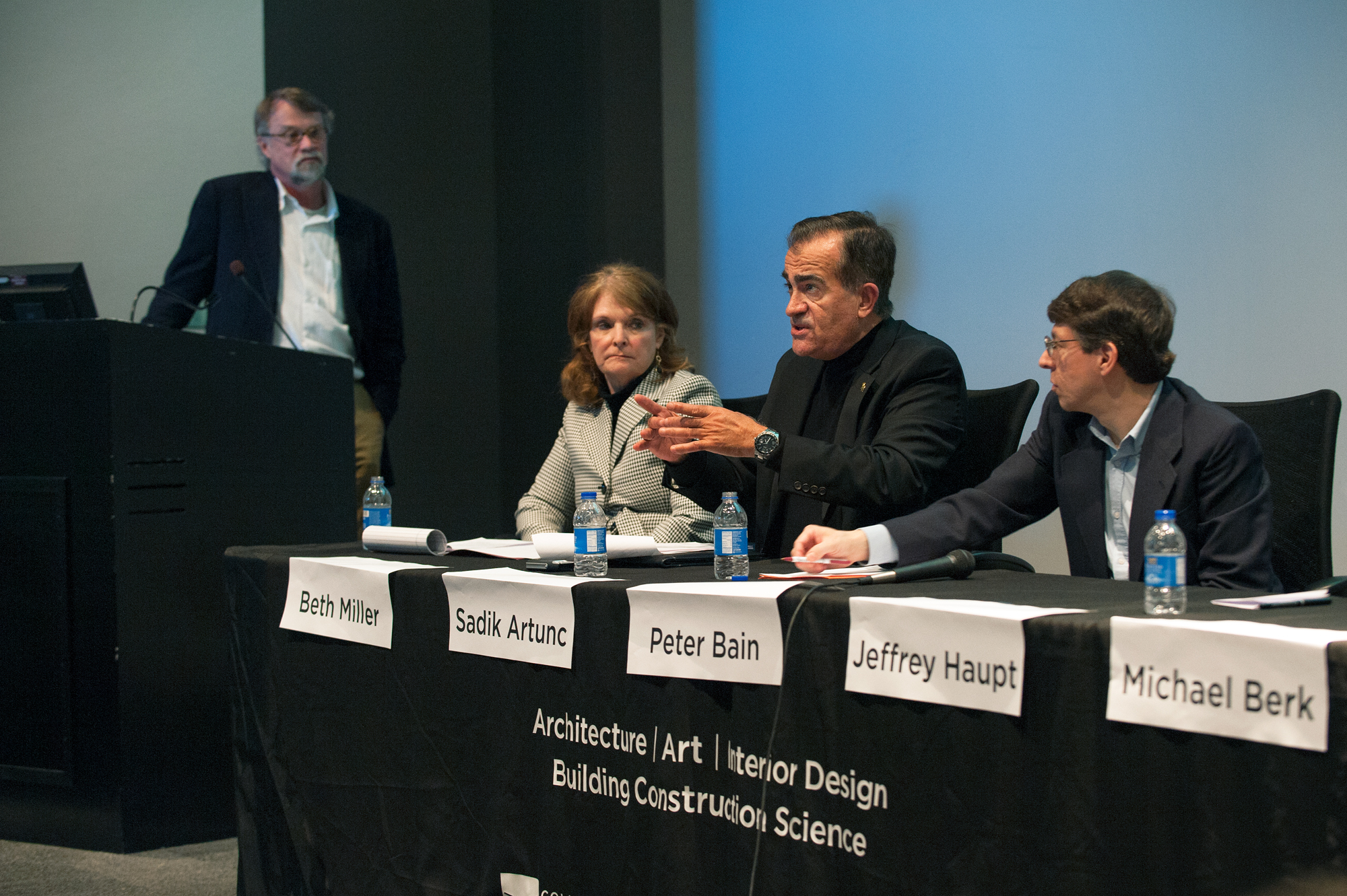Contact: Leah Barbour

STARKVILLE, Miss.--Reinterpreting the works of great artists, architects and fashion designers is not plagiarism; it's how designers produce uniquely creative and original pieces, according to Mississippi State design faculty and administrators.
A campus panel representing architecture, art, interior design and landscape architecture programs recently led a Plagiarism in Design Symposium. The professional group sought to define plagiarism in design and how to avoid it by understanding the difference between paying homage to inspiration and the outright theft of someone else's creation.
Panelists included Sadik Artunc, head of the landscape architecture department; Peter Bain, assistant professor of art; Michael Berk, director of the School of Architecture; Jeffrey Haupt, art professor and coordinator of the department's painting concentration; and Beth Miller, director of interior design and interim associate dean of the College of Architecture, Art and Design. David C. Lewis, interim director of building construction science, moderated the discussion.
Lewis defined design plagiarism as carelessly copying works without incorporating creativity or originality, while Artunc said he felt design is much more than developing aesthetically pleasing ideas. Good design solves problems, and students training to become professional designers are preparing to become the problem solvers of tomorrow, he said.
"Design teaches you problem-solving processes, so how can you design for a problem that you don't know what it is yet?" Artunc asked. "Design cannot be plagiarized if you're truly designing for a specific problem for which you already have advanced knowledge of the style and concept. Therefore, plagiarizing in true design is a misnomer."
Miller said design students must credit whichever artists or pieces inspired their work, but, like the other panelists, emphasized how critical it is to study, understand and imitate the master designers whose work preceded the students.
Likewise, Berk agreed that students develop their skills by copying the masters.
"Nothing is original," Berk said. "It's unlikely that anyone here has or will create a completely original idea or design. Most of what we do is based on previous research and study--precedent--and then we reinterpret through the filter of our own individual minds to create another artifact that possibly has some unique quality that hopefully elevates it beyond the original sources."
Haupt said student artists must learn how to articulate their ideas specifically through their work. When asking students to copy the masters, he's teaching them to get more specific with their intentions.
"I really encourage my students to look at past, present, any work that is meaningful to them and helps them onto the path toward getting specific with their intentions," Haupt said.
Berk added, "You learn skill by mimicking process."